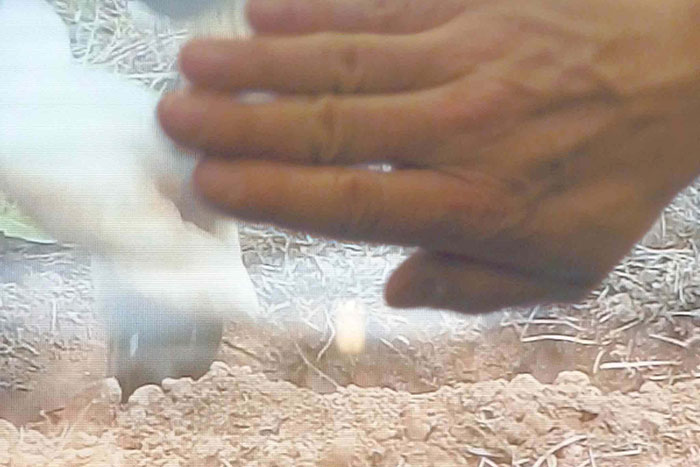Digital catalogue dedicated to the Augmented window project, 2014
Editing Thierry Fournier and J. Emil Sennewald
Distribution Pandore Edition
Texts by Jean Cristofol, Céline Flécheux, Thierry Fournier, J. Emil Sennewald. Programming Stanislas Schoirfer. English translations Clémence Homer.
Flatland is a digital catalogue devoted to the Augmented window project. It stems from a dialogue and a close collaboration between artist and curator Thierry Fournier, art critic and journalist J. Emil Sennewald, and developer Stanislas Schoirfer. From its beginnings, the catalogue was conceived for tablets. This choice is the result not only of the Augmented window project’s very logic and medium, but also of a willingness to explore how the tablet as a substrate contributes to the critical approach: beyond the mere aspect of mobility, how do the practices it generates create new relationships between meanings / relationships of meaning.
Together, the authors defined the project’s editorial direction, its interactive design and its visual identity, which uses Bartok, a new font created by Sarah Kremer, throughout the publication. Flatland accompanies Pandore Production’s edition of Augmented window for the iPad, as a free-standing application. This double publication enables the user to take part in a permanent dialogue, on a single substrate, between the catalogue and the experience of the works. Flatland, therefore, focuses more on the project’s critical and transversal aspects.
A new vision of space
Flatland is the title of a novella published by Edwin Abbott Abbott in 1884, “a politico-graphical allegory, somewhere between Lewis Carroll, Jonathan Swift and George Orwell”. Described as a forerunner of sci-fi literature, an exercise in geometry and a sharp critique of Victorian society, a digital edition of the book has just been released for tablets. The fact that it is now licensed for free distribution is not the only reason behind this new edition. As the author himself states in the introduction of his satire, he wants “to contribute to pushing back the frontiers of imagination”. That he chooses to do so by dealing with the notion of space is not without significance. It is perhaps the main reason behind the renewed interest [in this notion] sparked by Flatland’s digital version.
We are currently at a major turning point in the field of publishing, one that follows the turn taken by images (“iconic turn”) and space (“spatial turn”); so that today, we as artists, authors and editors, face a dynamic space that is no longer limited to the physical confines of the Renaissance’s monocular perspective. Today, space is the perforated space of houses linked to one another by cables. It is a space shaped by images. It is also a screen, which we stumble upon. Behind it, an augmented “space” opens up: “the physical space, layered with dynamically changing informations”. Identified in the 60s by Lefèbvre or Flusser, dynamic space has become subject matter for artists who ask themselves how, by what means, and through which structures space is augmented.
Practices of discernment
One cannot approach space without questioning the means that are used to represent it. These means – images, architectures, symbols appliances – constitute its very body. It is up to us – artists, critics, editors – to offer a practice of space; discernment to break with the logic of consumption, view its consequences with a critical eye, model its landscapes. In the face of the great movements of media concentration, this occurs in a dispersed way: by focusing on specific points, one can, in a way, identify the terrain of this augmented space, so that one might approach it in an enlightened manner.
Another critique view
This is where the art critic steps in. Having chosen as a starting point the “accomplice critic” method – which reacts in form and content to artistic stakes, follows the artist’s rationale, research and conclusions, while thinking about the conditions of their possibility – I asked myself the question what the best form would be form in order to answer a digital artwork already created on a tactile screen. Very soon, it became obvious that the critical ability to transcribe a visual experience was no longer enough. The text had to be conceived of differently – as code and as image – in order to engage with what it was that the tool – i.e., the tablet – makes available. The Flatland project intellectually and manually challenges the art critic’s faculties. New roads open up to use such an apparatus, such as for example the introduction of quotes to orient reading towards other material, to open the space around the text and make it dynamic. New forms of the critic’s work emerge as a consequence, conscious of the stakes associated to these devices. As digital publications emerge, the critic’s old substrates – the book, the catalogue, the art review – are reconsidered.
One of the reasons behind Flatland lies in a practice that raises questions regarding substance while using tools that are codified by the industry; that is confronted with the reality of the screen that opens both the gaze and the field of action onto new fields; in short, one that contributes to pushing back the frontiers of the imagination.
